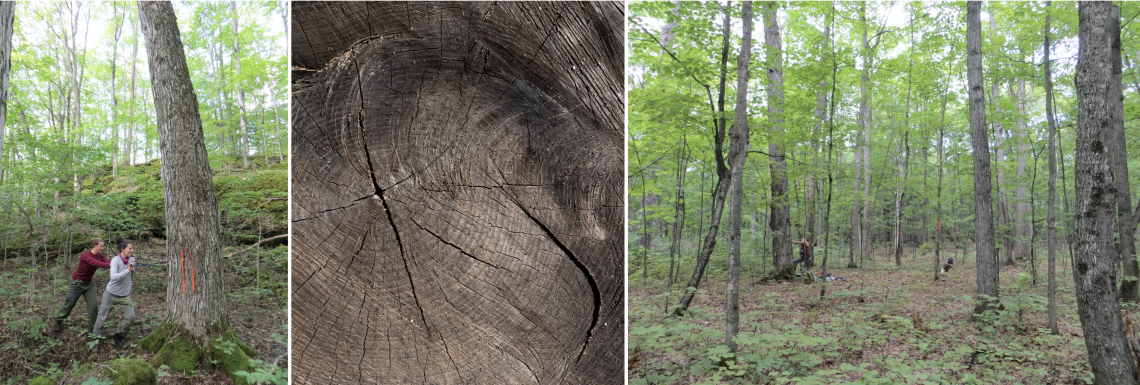"Trees do not always act their age" - Improved methodology to estimate tree growth

Forests provide a habitat for many species and forests also store a large amount of carbon. This means that healthy forests can slow down climate change by taking up and storing some of the excess carbon dioxide we pump into the atmosphere. It is therefore really important to understand how forests respond to climate change. Do forests grow better and healthier with the changing climate or do forests suffer under climate change? Past research into that topic has been somewhat inconclusive. In this paper, Rachel Dietrich, a graduate student here at the School of Environmental Sciences, supervised by Prof. Madhur Anand argues that part of the inconclusiveness of the past research is due to the methodology used to estimate and predict long term growth trends of forests. In this paper, Rachel and Madhur propose a new and improved methodology that is better able to estimate historical growth trends of trees.
When trees grow, they form distinct growth rings every year. A tree that is growing more in any given year, produces a thicker growth ring resulting in an increase in stem diameter. The width of that tree ring, or how much a tree grows per year, depends on several different factors. Firstly, tree growth depends on the age of the tree. In some species, young, small trees grow faster than old, big trees. Secondly, trees grow better when the climate is suitable for that specific tree species. To understand the climatic component of tree growth, we develop models that standardize the growth of trees based on the tree’s biology, i.e age. That standardization methodology is referred to as “tree ring standardization”. When we have a standard expected growth rate for a given tree species, we can compare that standard against the actual measured growth (by measuring the width of each yearly tree ring). That difference between expected and measured values gives us an insight into how much of an effect climate had on the growth of the trees.
This paper published in Biogeosciences is suggesting improvements to the “tree ring standardization methods” traditionally used. Dietrich and Anand argue that basing the standardization methods entirely on the age of the tree can lead to incorrect growth predictions. Especially for trees that can tolerate shady conditions, their growth isn’t tightly related to age. Trees growing in the shade are often staying small for years and persist in the understory of a forest. Only when there is an opening in the canopy, their growth rate spikes. Imagine an old maple tree that had sprouted 75 years ago in a dense understory of a forest, if it was able to survive, it will remain relatively small, until there is an opening in the forest canopy. On the other hand, a 75-year old maple tree that originated in an area with less canopy cover, was able to grow much taller and wider much faster. Therefore, heavily relying on tree age to estimate growth can lead to conflicting or even incorrect results. When we estimate expected tree growth incorrectly in studies attempting to quantify the impact of climate change on forest productivity, this could then lead to unreliable estimations.
The new method proposed by Dietrich and Anand proposes a different approach. They propose to use tree size (in the year of ring formation) measured as tree diameter at breast height (yes, that is the scientific standard of measuring tree size) as a way to standardize tree growth. The size of a tree is more directly related to growth than age itself. Not only are bigger trees able to acquire more nutrients than smaller trees, but they are also less likely to be in competition with other trees. They test the accuracy of their model relative to other contemporary standardization models in data collected from real trees and produced from a forest simulation model. They clearly showed that basing tree growth standardization models on the tree size instead of tree age produced better estimations of historical growth trends.
Citation: Dietrich, R., & Anand, M. (2019). Trees do not always act their age: size-deterministic tree ring standardization for long-term trend estimation in shade-tolerant trees. Biogeosciences, 16(24), 4815-4827.
You can find the original research article following this link: https://www.biogeosciences.net/16/4815/2019/
If you have any questions about our research contact sescomms@uoguelph.ca and if you have specific questions about this article, contact Prof. Madhur Anand directly via email: manand@uoguelph.ca.